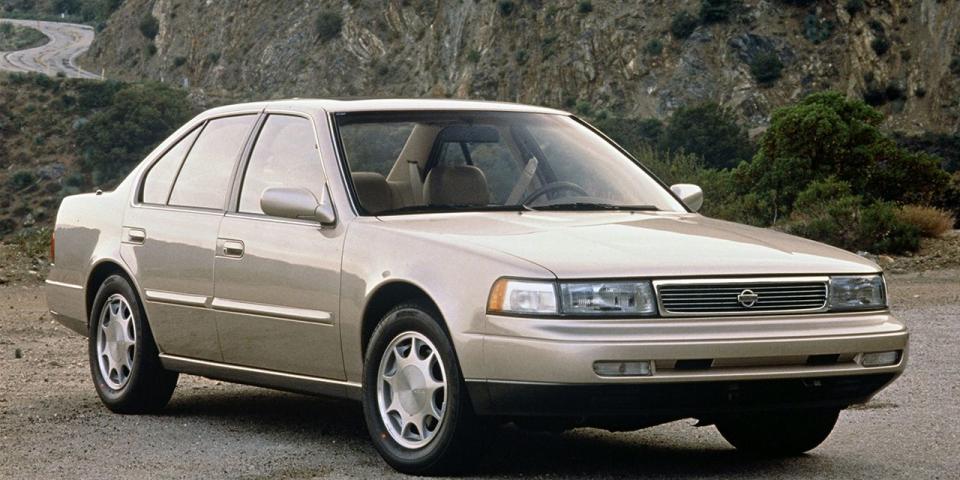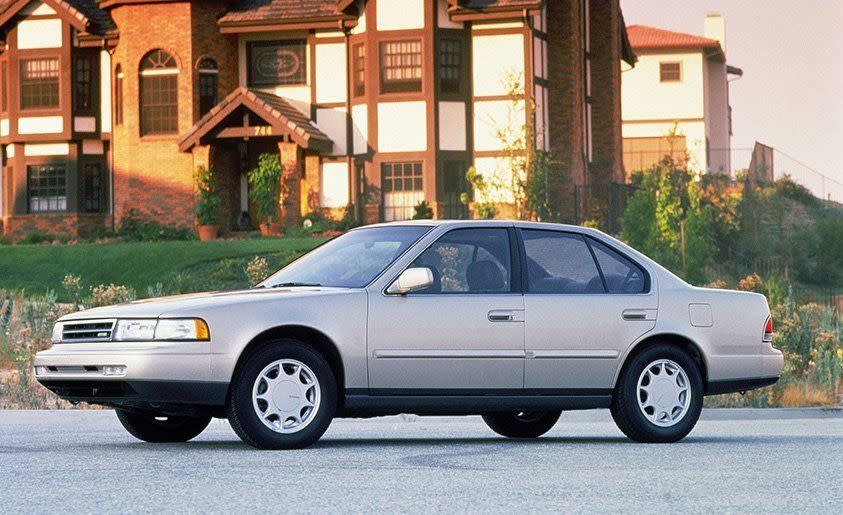The Auto Industry is Ripe for Disruption, Or: The Perils of the "Pretty-Good Car"


From the May 2016 issue
Recently I was chatting with George Peterson, president of the veteran market-research and consulting firm AutoPacific, about Nissan’s strange year. It had a flirtation with sports-prototype racing, debuting the front-drive hybrid GT-R LM NISMO in a lavish Super Bowl ad but running just a single race before axing the whole program. Renault-Nissan chairman Carlos Ghosn has pushed hard to grow U.S. market share from 8.5 percent to 10 percent by the end of 2017, but, as the trade paper Automotive News reported, dealers have complained that the goal is unrealistic and the company’s stair-step incentive program pushes stores into selling cars at a loss. And Ghosn had to work hard to preserve the Renault-Nissan partnership after the French government moved to take more control of Renault, in which it already had a 15-percent stake. No doubt, the proud Japanese are wary of taking orders from Paris as the partnership increasingly looks like a one-blade propeller, with Nissan and its profitable U.S. sales dwarfing the meager earnings from Renault’s many low-margin markets.
Peterson agrees that Nissan, despite growing its U.S. sales by a healthy 7 percent in 2015, has had a few false starts. He figures that North America’s heavy management churn, now somewhat settled, has been a factor. As we’re winding down, Peterson mentions that there will be 357 named light-vehicle models for sale in the U.S. market by 2020. That’s a lot of noise trying to find your ears. Peterson calls it the atomization of the car market. Coincidentally, 357 is only a little more than the number of musicians (342) in the University of Michigan marching band. Buying a new crossover is getting to be like picking out your favorite from Michigan’s 68 trumpeters.

Standing out amid the clamor is not a new problem, but it is one of the growing imperatives as quality and safety become commodities and more models arrive, both from traditional brands and some new startups. I’m picking on Nissan, perhaps unfairly, because I think the company symbolizes an industry-wide identity crisis at a time when identity is paramount to survival. What is Nissan? Is it the green-car company that launched the Leaf to great ballyhoo in 2011 but has yet to build on it? Is it the performance company that makes the aging 370Z and GT-R with no replacements in sight? Or is it the more sporty alternative to Toyota that gave us the wonderful 1989 Maxima 4DSC (four-door sports car) and 1991 Sentra SE-R, but is now just another purveyor of the PGC, the pretty-good car?
We find Nissans handsome and decent, but a Nissan hasn’t won a C/D comparison test since 2009.
Well, at least Nissan has rolled the dice, both on product and styling. However, proffering PGCs can be dangerous; look at what happened to Fiat Chrysler, which said recently that by 2018 it’ll be out of the U.S. small- and mid-size-car businesses and will concentrate on more-profitable trucks. The Dodge Dart and Chrysler 200, the latter redesigned a year ago, have faded into background noise and aren’t worth the engineering costs for replacements, apparently. Scion is another victim of PGC syndrome. Launched as a play for young buyers, it eventually became indefinable as anything other than incremental and costly-to-support volume for Toyota. Scion’s seven model lines (none of which was a crossover in an era of growing truck sales) sold barely more than the Honda Fit did by itself last year. With nothing to root it to the market beyond the appeal of this week’s deal, Scion died.
BMW and Mercedes have carpet-bombed the market with models, but also arguably diluted their brands. It’s hard to see the coming three-row BMW X7 as anything other than a stultifying me-too move by a company that used to set the agenda in the sports-sedan market. Meanwhile, Hyundai is working hard to shed PGC status, launching a luxury channel aimed at the Germans, and, with Kia, making huge engineering leaps with each generation. But it remains difficult to define Kia, maker of both the Soul and the K900, as anything other than incremental volume for the group.
One reason Apple and Google are eyeing the car business is because they see it as ripe for disruption. For decades, the industry has engaged in redundant efforts to produce PGCs that are increasingly harder to distinguish. Yes, that’s partly due to regulations and partly the funneling effect of mainstream consumer tastes, but also because the high cost of gambling on something different has made everyone risk-averse. The danger in being conservative and duplicative may become grossly apparent if the Apple car ever breaks cover. The company has billions to spend and a track record of blowing up convention, from the mouse to the Mac.
Overnight, the iCar may make the industry’s dearly held orthodoxies look as obsolete as the Commodore 64. Apple has a strong identity; to survive, a car brand must have one, too.
You Might Also Like

 Yahoo Autos
Yahoo Autos 